Damascus Roman Ruins : Damascus, one of the world’s oldest continuously inhabited cities, holds a legacy that stretches back thousands of years. Among its greatest historical treasures, the Damascus Roman Ruins reveal the city’s grandeur during the Roman era. When the Romans took control in 64 BC, they reshaped Damascus with monumental architecture that still defines the Damascus Roman Ruins today. Visitors can explore ancient streets, arches, and columns that showcase the artistry of Roman engineering. The Damascus Roman Ruins remain a living testament to how history continues to shape modern Damascus, making the Damascus Roman Ruins an unforgettable journey through time.
| Topic | Quick Info |
|---|---|
| Name | Damascus Roman Ruins / الآثار الرومانية بدمشق |
| Location | Old City of Damascus, Syria – near Al-Hamidiyah Souq and Umayyad Mosque |
| Era | Roman period, 1st–3rd century CE |
| Original Function | Public and civic structures: temples, streets, arches, and baths |
| Key Features | Roman streets (cardo), arches, mosaics, columns, and remnants of ancient walls |
| Current Use | Historical and archaeological site for tourists and researchers |
| Significance | Evidence of Damascus as a major city in the Roman Empire; one of the oldest continuously inhabited cities in the world |
Damascus Roman Ruins Sites
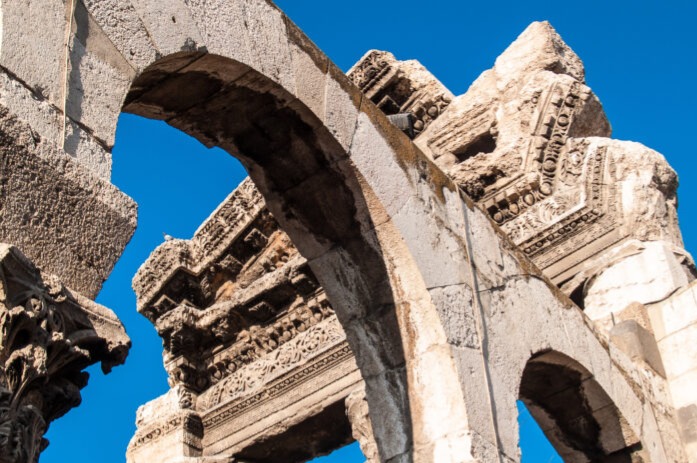
The Temple of Jupiter
One of the most significant and majestic Roman structures in Damascus is the Temple of Jupiter. Originally built atop a site that once hosted an Aramean temple, the Roman sanctuary was constructed to honor Jupiter, the king of the Roman gods. The temple complex was among the largest in the Roman world and served as the spiritual center of the city during Roman rule.
Although much of the original structure is now gone, visitors can still see three massive Corinthian columns and remnants of the temple’s foundation integrated into the Umayyad Mosque complex. These surviving elements give a glimpse into the sheer scale and splendor of the Roman architectural style. The temple once boasted tall colonnades, towering gateways, and intricate carvings that showcased the skills of Roman artisans and engineers.
The Roman Gate: Bab Sharqi
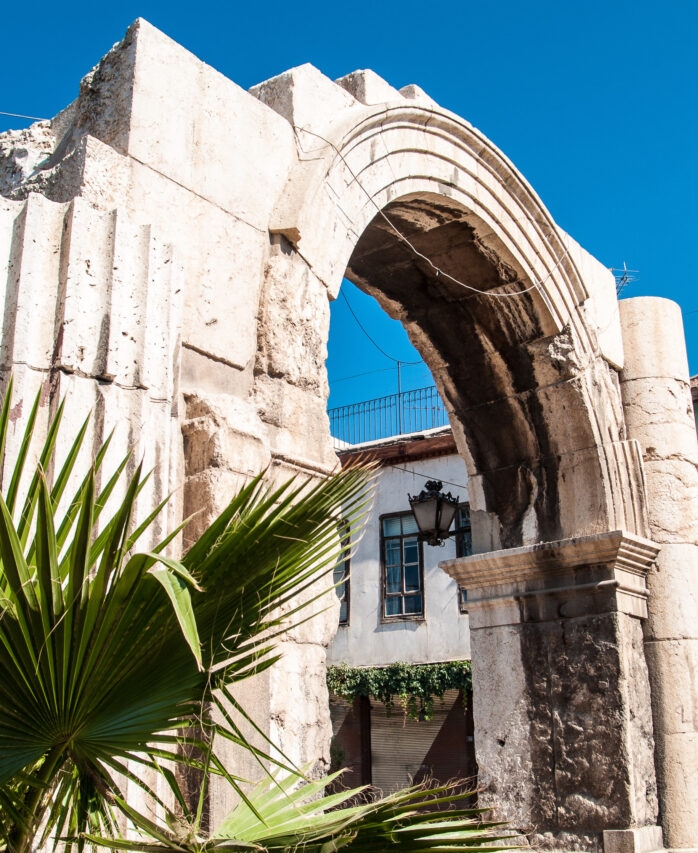
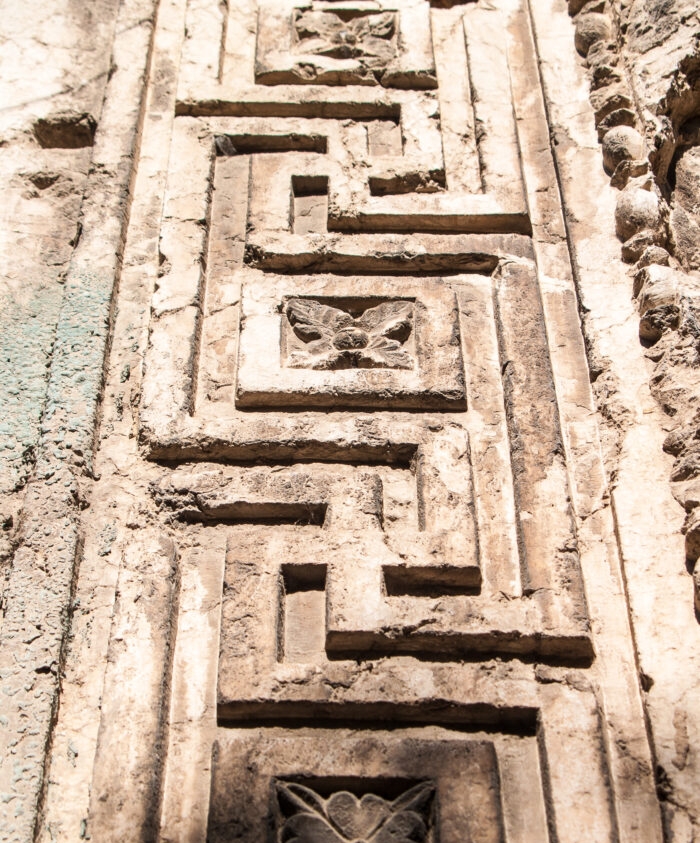
Bab Sharqi, or the Eastern Gate, is one of the best-preserved Roman monuments in Damascus. This gate marked the eastern entrance to the Decumanus Maximus, the grand Roman street that ran through the city. Constructed in the typical Roman fashion, Bab Sharqi originally featured three arched entrances. The central arch was intended for wheeled vehicles while the side arches were used by pedestrians.
Today, Bab Sharqi stands as a silent guardian to the Christian Quarter of the Old City. Walking through this gate, visitors can imagine what life was like during Roman times, when merchants, soldiers, and citizens passed through daily on their way to the bustling heart of Damascus. The gate remains one of the finest examples of Roman urban planning still visible in the city.
The Straight Street: Via Recta
The Roman city of Damascus was organized according to a grid plan, and its main axis was the Straight Street, or Via Recta. Stretching from Bab Sharqi in the east to Bab al-Jabiyah in the west, this thoroughfare was the backbone of Roman Damascus. Originally lined with columns, shops, and public buildings, Via Recta connected the main parts of the city and served both commercial and ceremonial purposes.
Today, the street is still used and partially follows its ancient Roman route. Modern shops and homes now line the street, but in some areas visitors can still find original Roman paving stones and column fragments. The street is especially famous for its mention in the Bible as the place where Saint Paul regained his sight after his conversion to Christianity. Walking along Via Recta offers not only a journey into the Roman past but also a sense of the continuity of Damascus through time.
The Roman Theatre and Stadium
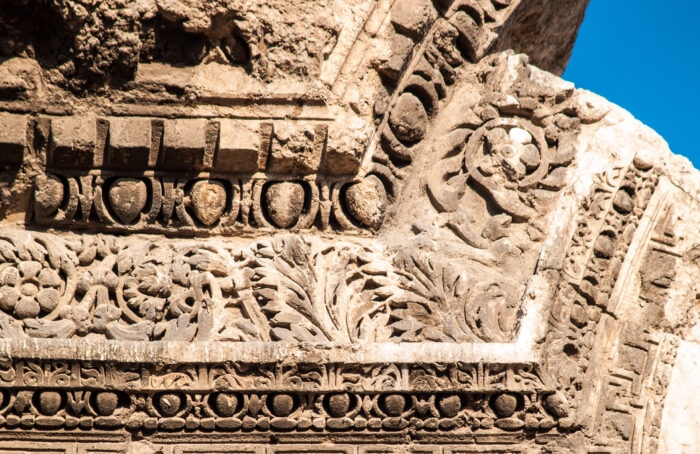
While less visible today, evidence suggests that Roman Damascus once included a large theater and possibly a stadium or hippodrome. Though these structures have not been fully excavated, archaeological findings and historical records confirm their existence. The theater would have hosted public performances, plays, and ceremonies, while the stadium served as a venue for athletic competitions and possibly chariot races.
Though no complete remains are currently accessible to visitors, some fragments of the theater’s structure have been uncovered near the Old City’s southern edge. These hints at Roman entertainment culture reflect the importance of public gatherings and cultural life in the Roman provinces.
The Roman Aqueducts and Water System
The Romans were famous for their engineering achievements, especially in water management. In Damascus, they built an extensive system of aqueducts and water channels that brought fresh water from the Barada River into the city. This water supply system supported public baths, fountains, private homes, and agricultural lands.
Traces of these aqueducts can still be found in the surrounding countryside and parts of the city. Though much of the system has been lost or modified over the centuries, the scale and ingenuity of Roman water engineering remain impressive. These systems allowed Damascus to flourish as a green and prosperous city even in the arid landscape of southern Syria.
The Roman Marketplaces
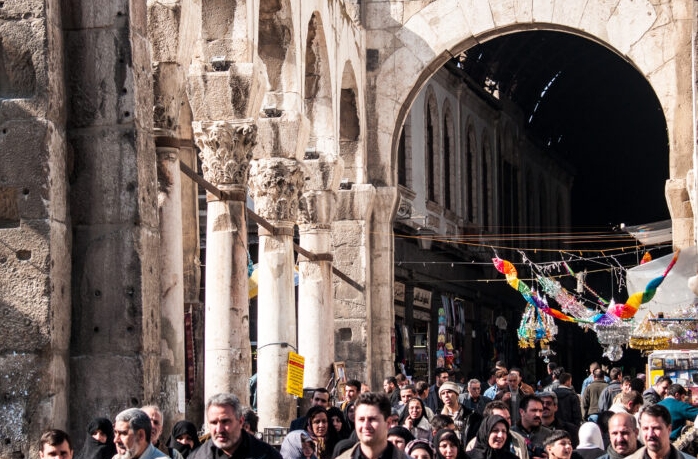
The Roman period also left its mark on Damascus in the form of organized marketplaces and forums. Though few visible ruins remain, the layout of the Old City still follows the basic Roman market structure, with certain streets and squares originally designed for trading and public life.
The Suq al-Hamidiyeh, one of the most famous traditional markets in Damascus today, stands over what was once a Roman colonnaded street. While the modern market has a distinctly Ottoman flavor, its Roman foundation is still evident in the straight lines and overall design of the area. Visitors shopping in the suq are, in a sense, retracing the footsteps of Roman-era traders and citizens.
Roman Influence on the Umayyad Mosque Site
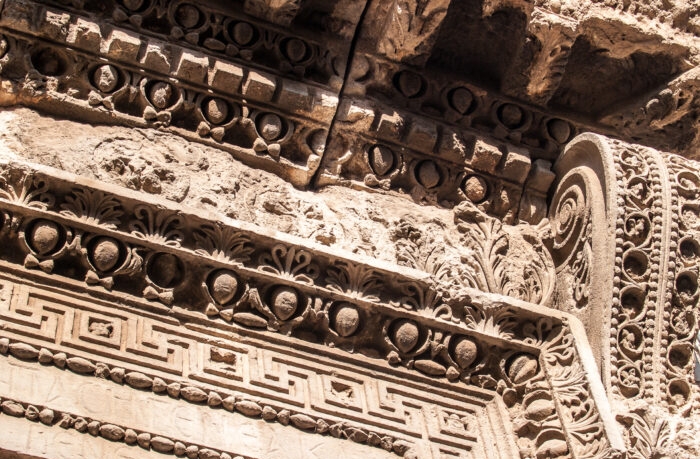
While the Umayyad Mosque is primarily an early Islamic structure, it incorporates earlier Roman elements, especially from the Temple of Jupiter. The massive courtyard and surrounding columns were influenced by Roman basilicas and forums. The integration of Roman architecture into later Islamic buildings shows how Damascus evolved through history, blending cultures and styles.
Visitors exploring the Umayyad Mosque will encounter Roman columns reused in the walls and courtyards, and can appreciate how the mosque was built on the spiritual and architectural legacy of the Roman temple before it.
Conclusion: A City Where Rome Still Lives
Damascus is more than just a city of ancient streets and old markets. It is a living museum where the Damascus Roman Ruins continue to echo through stones, arches, and columns that have survived the centuries. From the grand remnants of the Temple of Jupiter to the bustling path of the Straight Street, the Damascus Roman Ruins offer a deep and fascinating glimpse into the city’s classical past.
For tourists interested in history, architecture, and archaeology, Damascus provides a rare opportunity to walk through a city that has never stopped being alive. Exploring the Damascus Roman Ruins is not only a journey back in time but also a chance to witness how past civilizations continue to shape the present in one of the world’s most remarkable cities. With so many well-preserved sites, the Damascus Roman Ruins remain a must-see destination for anyone visiting Syria.
Finally.. If you have any questions, please contact us. To explore further, visit our Facebook Syria collection for rare images and cultural highlights.
Sources & References:
UNESCO – World Heritage Centre: https://whc.unesco.org
Archnet – Architecture & Heritage Database: https://www.archnet.org
World History Encyclopedia: https://www.worldhistory.org
Syrian Heritage Archive Project: https://syrian-heritage.org
Global Encyclopedia: Wikipedia



